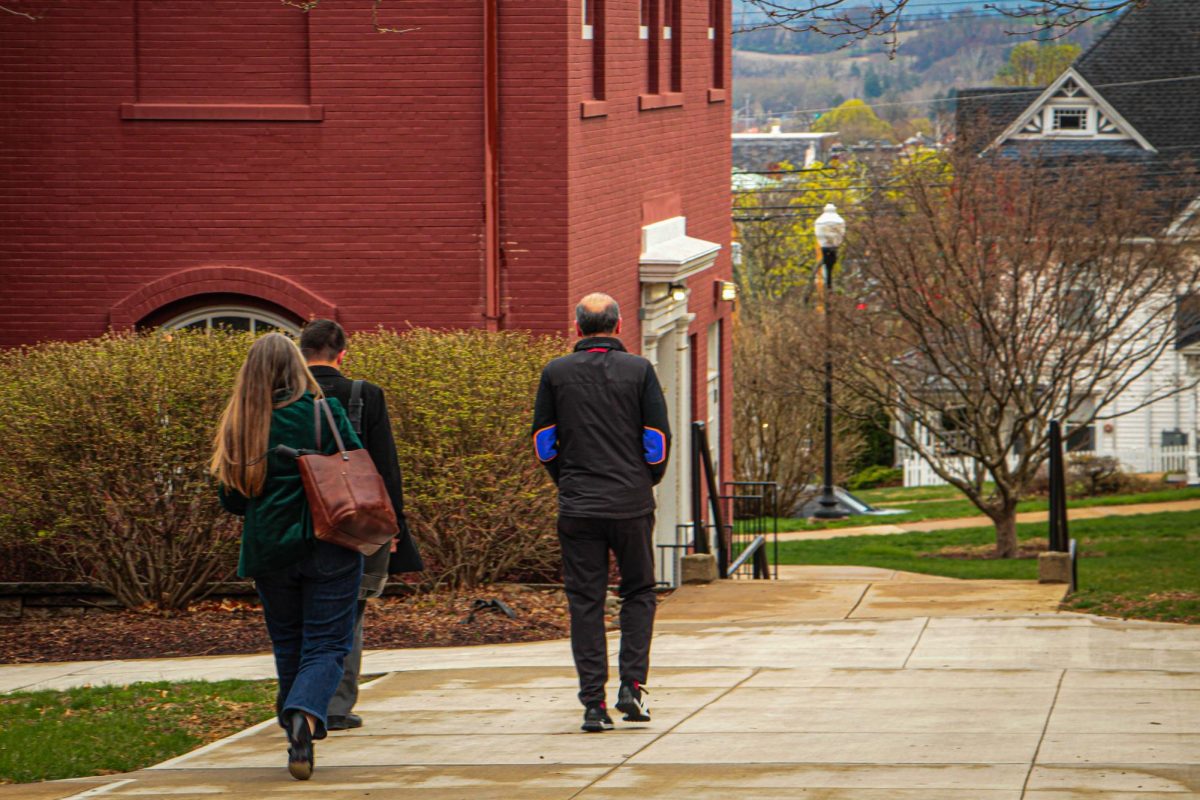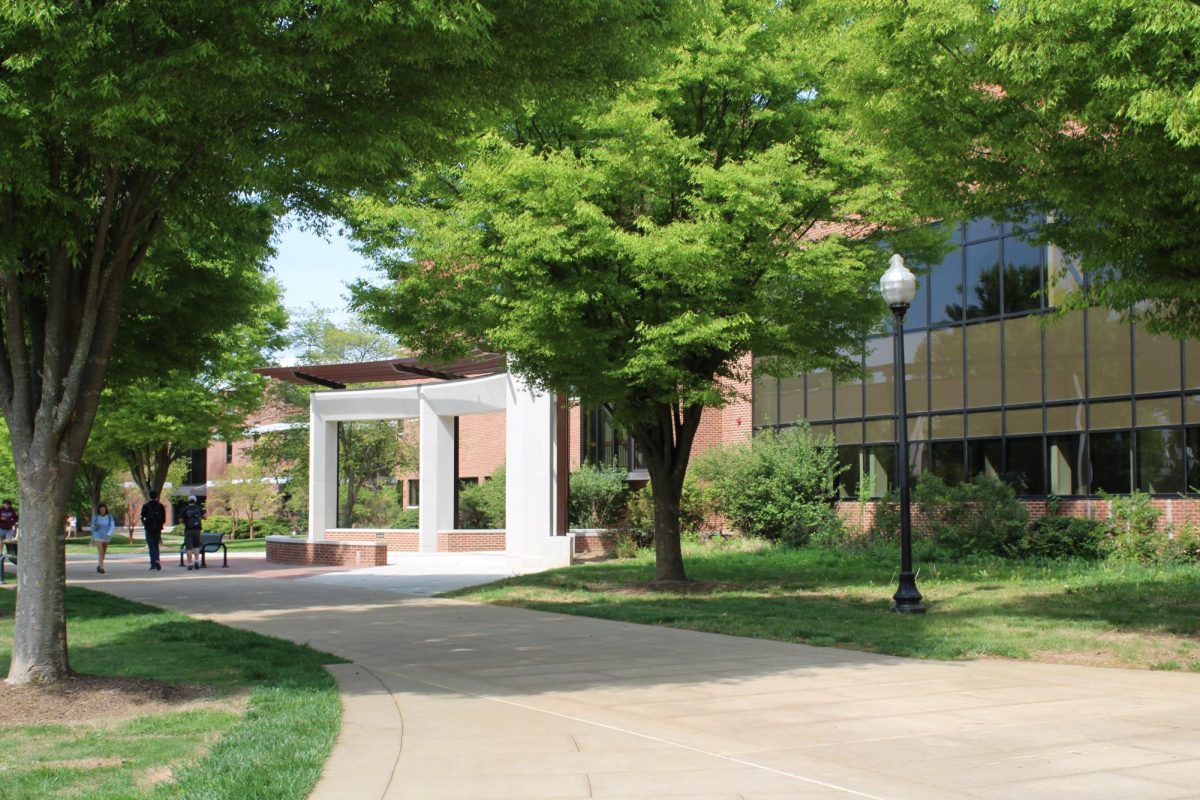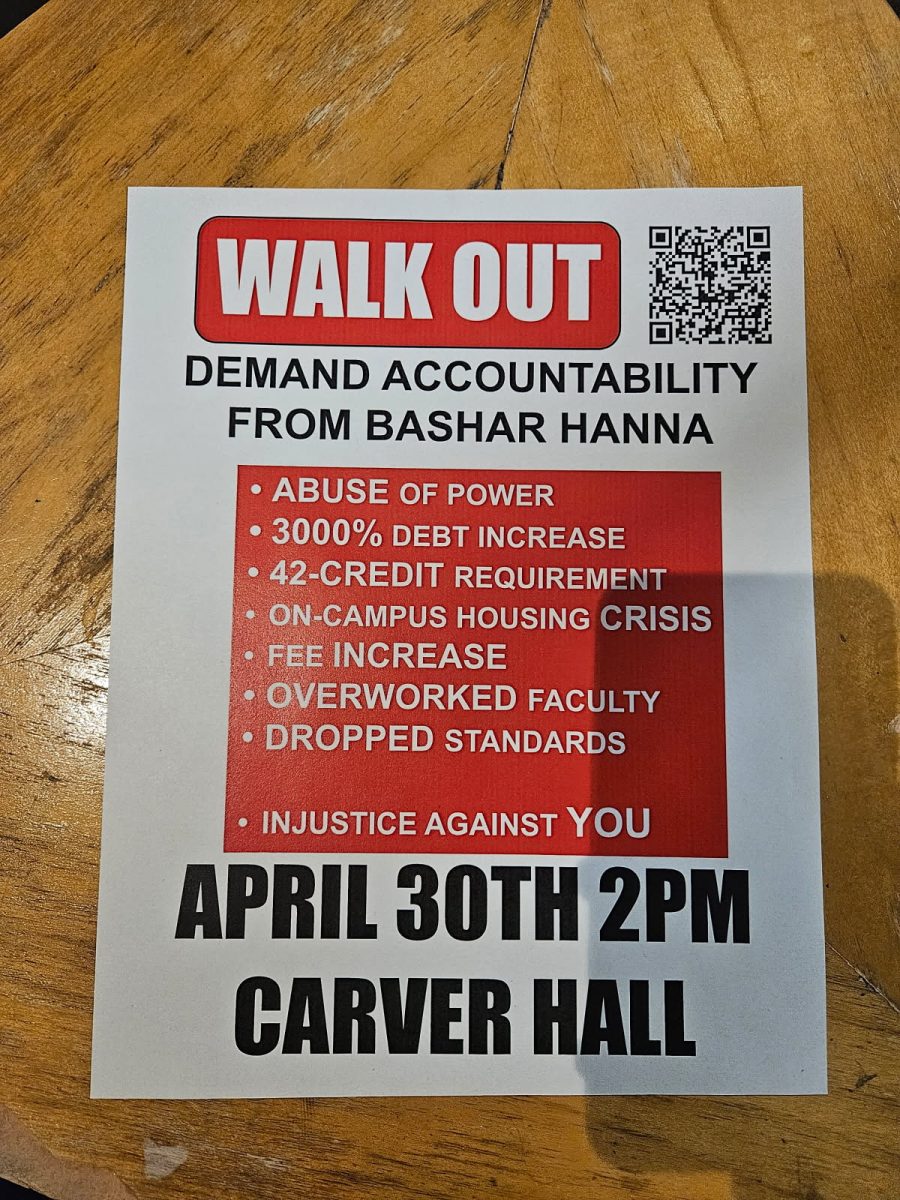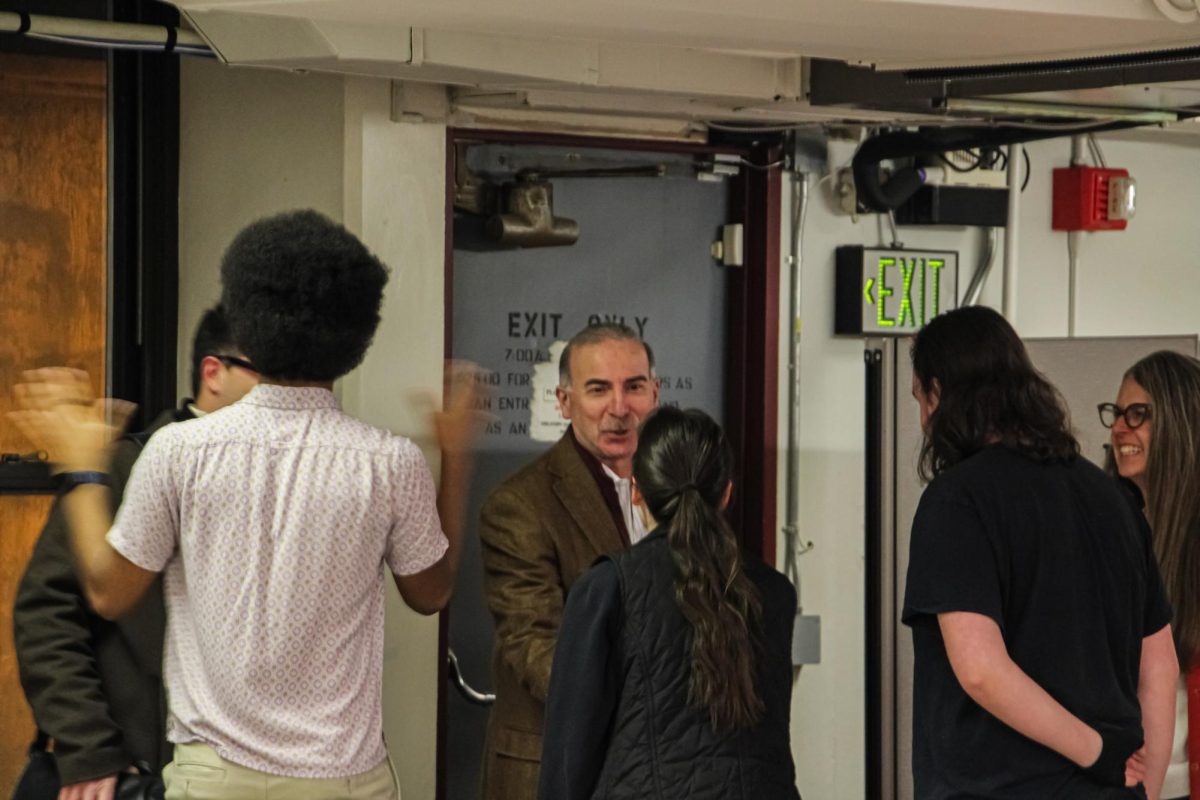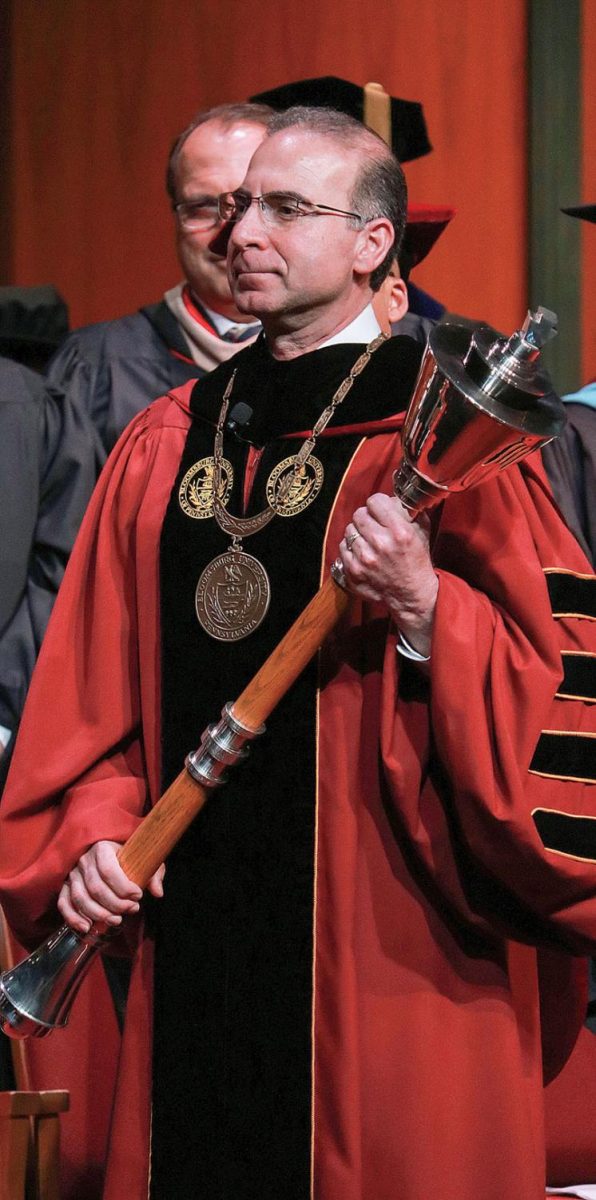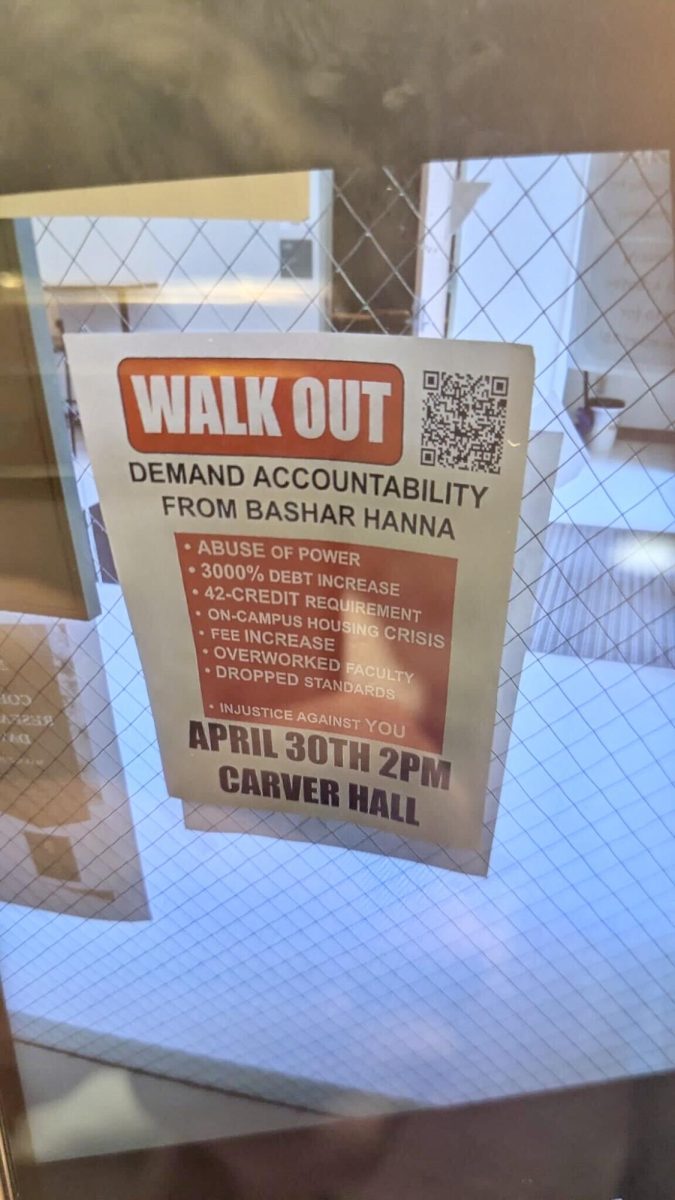A cracked water line between Soltz and Lycoming Halls has necessitated a new type of machinery on Bloomsburg’s campus.
The area where the line has cracked is positioned next to several other utility lines including gas, electric and steam lines.
Due to the tight quarters of the area, a hydro-excavation rig was necessary and has expedited the repair process exponentially.
Bloomsburg University AVP Eric Ness said that the breach in the pipe happened sometime Wednesday and that the cast-iron pipe crack is not uncommon on campus.
The pipe is supposed to lay on a bedding material that alleviates all pressure on the pipe. Ness and his colleagues found that when the pipes were originally laid the proper bedding was not used, causing the pipe to crack.
The water line that ruptured is used specifically for the sprinkler system in Lycoming Hall, so swift action was needed. In the meantime, there was a 24-hour fire watch monitoring and watching for any fires that may have broke out while the fire suppression system was down.
The soft dig rig is used when there is breakable lines near the dig site. The hydro-excavation method is much more precise than using a normal backhoe.
The backhoe would rip through the utility lines if the operator dug too deep, so the only solution would be to manually dig out the rest of the gravel and fill by hand, extending the repair time to multiple days instead of multiple hours.
The hydro-excavation uses water pressure to break apart the dirt and fill and then a large vacuum system removes the material.
The new machinery was not only convenient for the workers, but also necessary due to the nature and position of the crack.
Once the excavation was complete, the fractured pipe was a relatively easy fix. The crew put a clamp over the section that was damaged and sealed it water tight.
After the rupture, the hole was filled with gravel and compacted down for the rest of the winter. The area will be repaved with asphalt when the temperature rises to finish the repair entirely. The repair took all of three days thanks to the new hydro-excavation technique.
Ness acknowledges the inconvenience that repairs and projects have on students, but he would also like to remind them that he and the rest of his staff are not doing this for pleasure, stressing to the community that they are working to making the campus a better living and working space for all.

